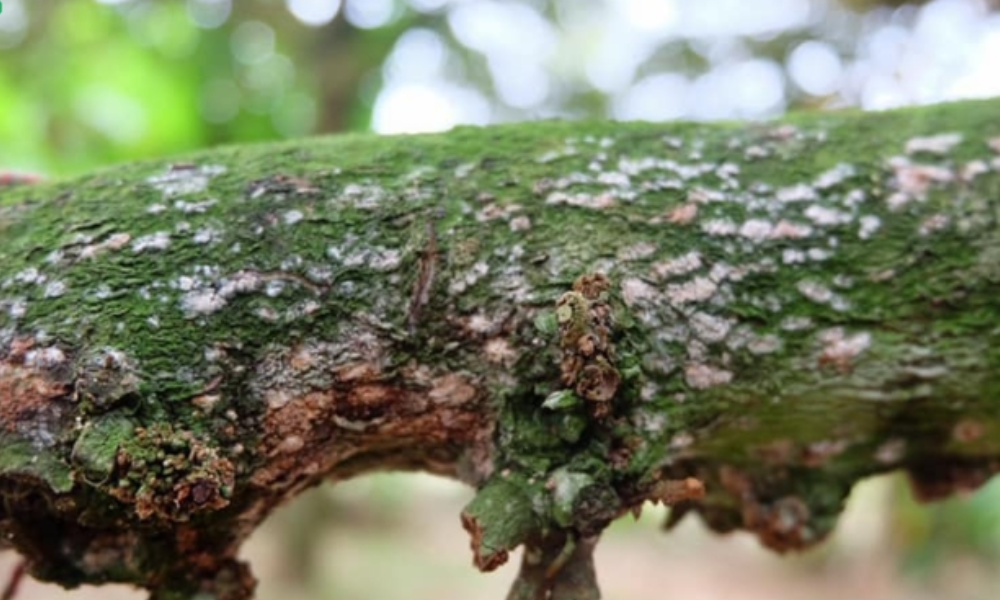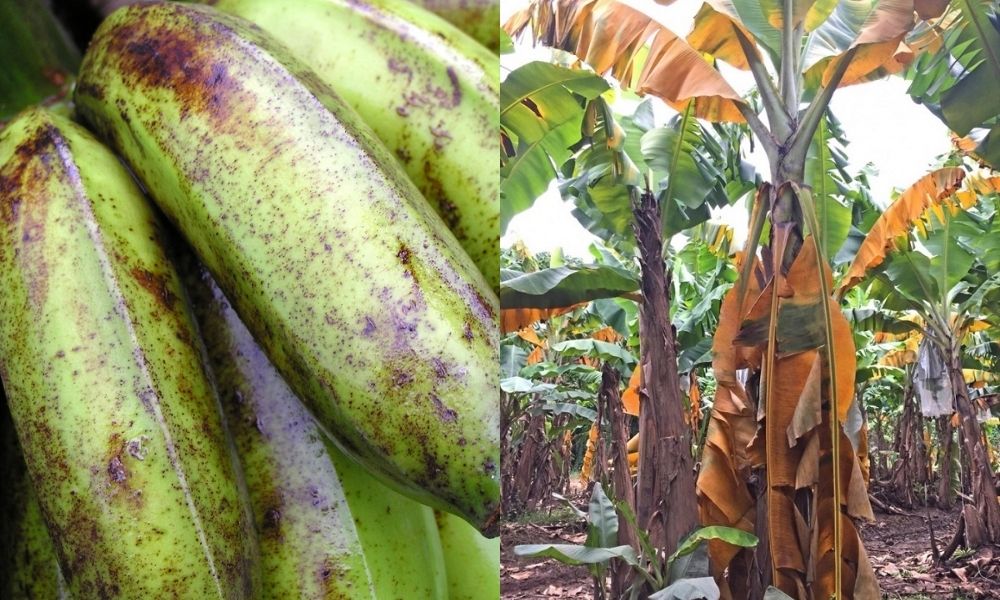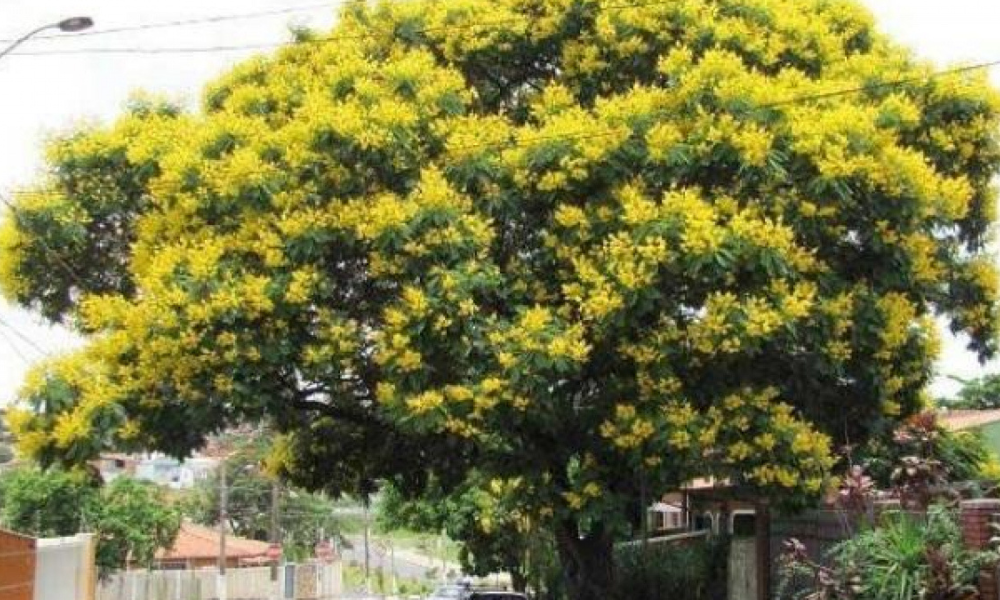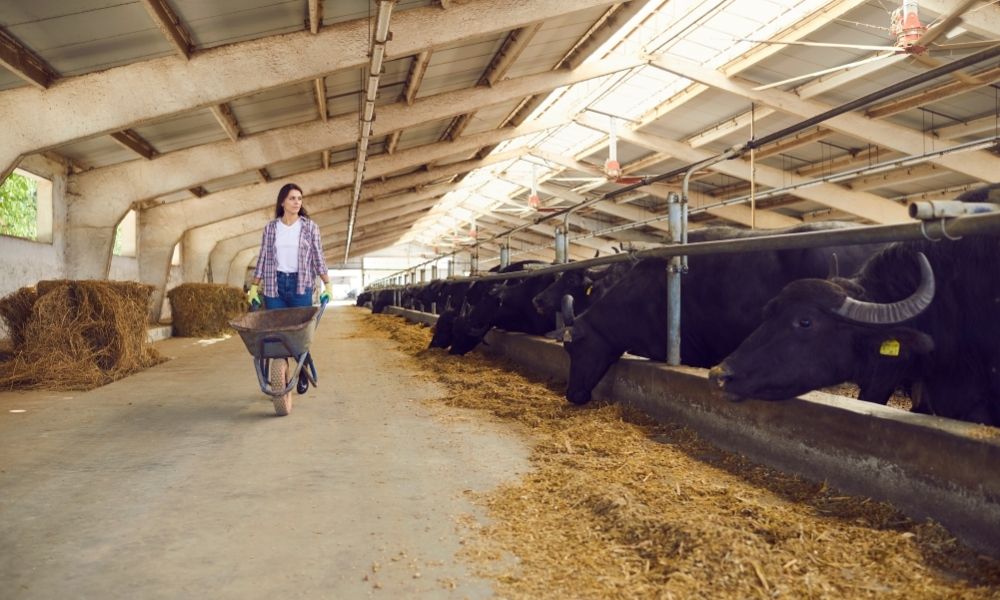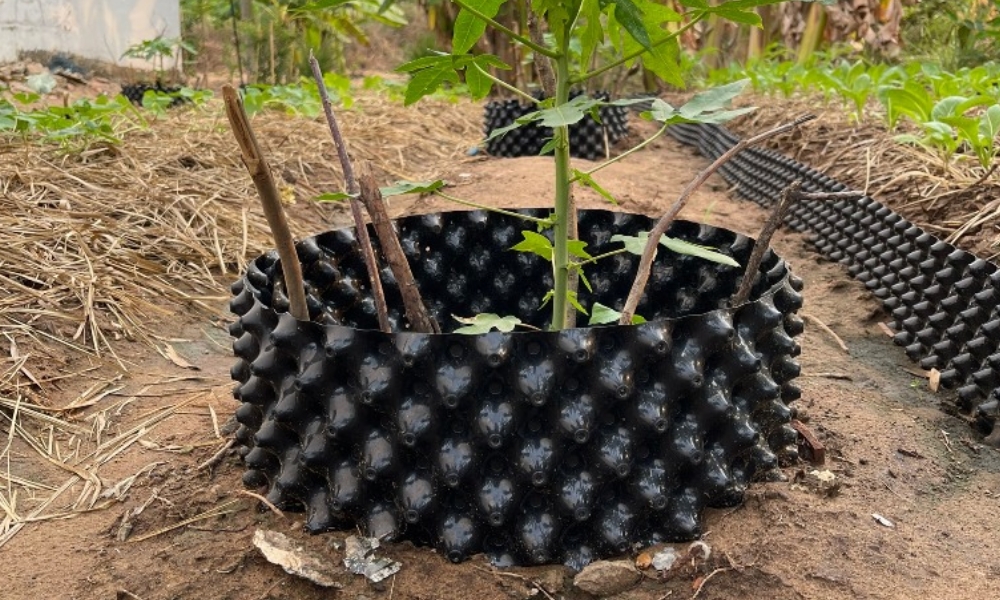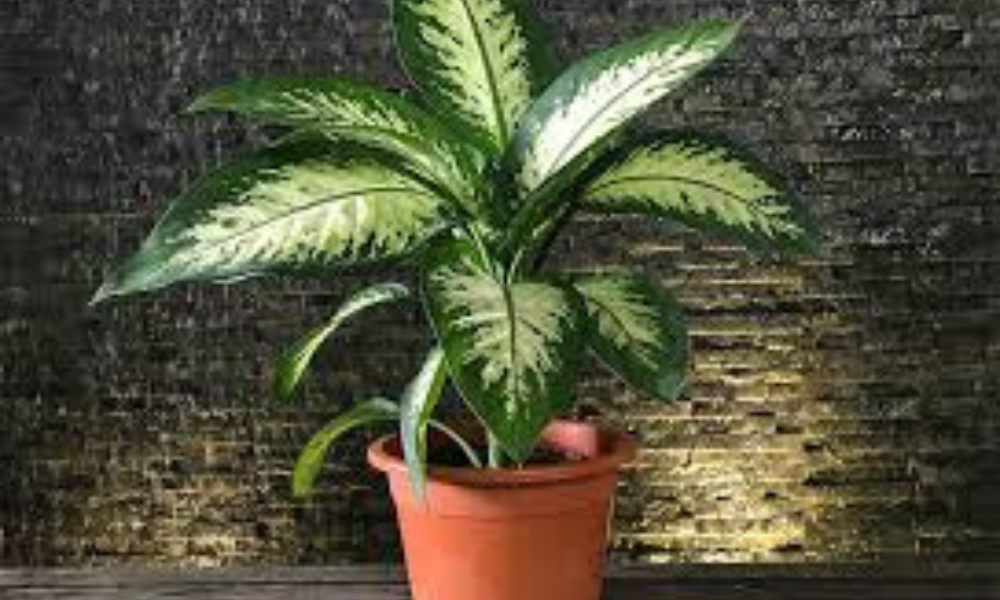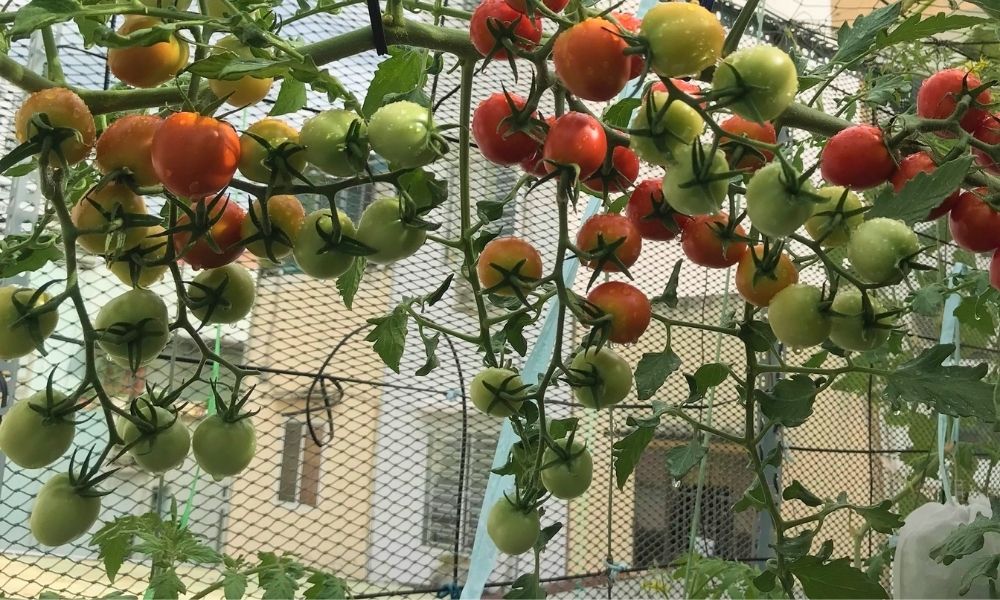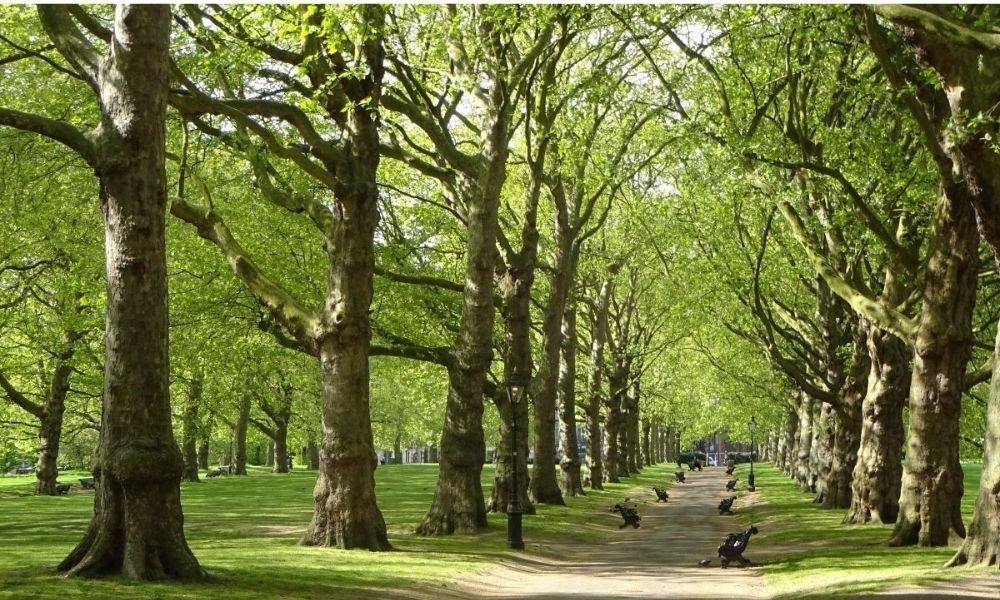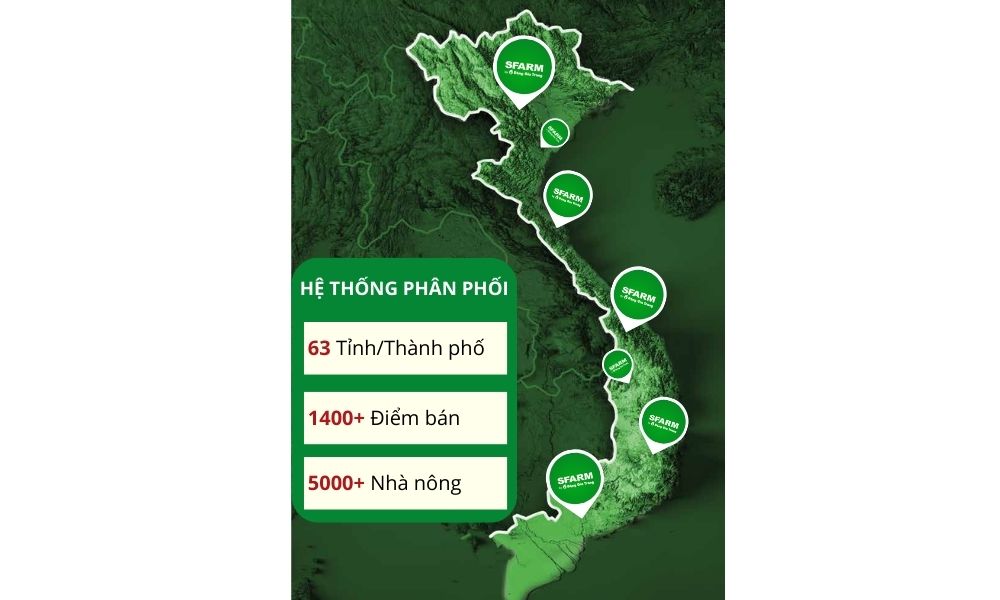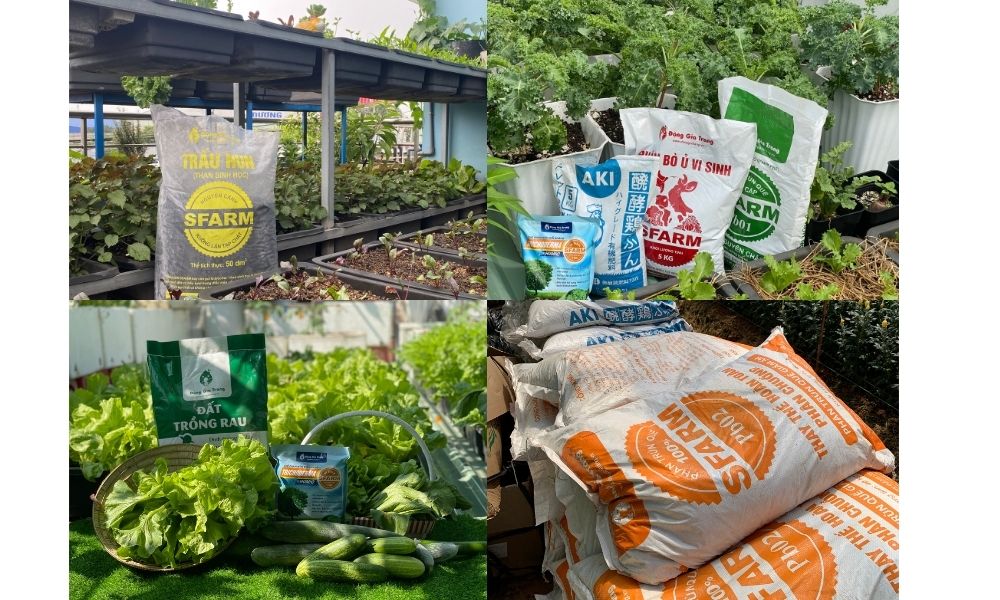Cây Bàng Non Là Gì? Đặc Điểm, Trồng Và Chăm Sóc Cây Bàng Non
What is a young almond tree? Are you curious about this familiar plant at a young age? The almond tree, a large tree with strong vitality and broad foliage, is often grown as a shade tree. But the young almond tree, in its early stages of life, has unique and interesting characteristics.
This article by KTH GARDEN will help you better understand young almond trees: from identifying characteristics such as young almond leaves, trunk, roots, to how to plant and care for the tree to grow healthily. We will explore the development process of a young almond tree, from a small seedling to a tall mature almond tree, spreading shade throughout the space. Let’s find out now!
What is a young almond tree? Identification characteristics of young almond tree
With more than 20 years of experience in the field of green trees, I would like to share my knowledge about young almond trees. Young eagle trees, also known as baby eagles, small eagles, are the first stage of the life of the eagle tree ( Terminalia catappa). This is a woody plant belonging to the Bang family, with strong vitality and high adaptability to many different climatic conditions. Unlike mature almond trees with wide foliage and strong trunks, young almond trees have unique characteristics that help us easily identify them.
The most recognizable feature of young almond trees is their small size. The height of young almond trees usually ranges from a few tens of centimeters to several meters, depending on the tree’s age and care conditions. The tree trunk at this stage is usually soft and pliable, the bark is quite smooth and light brown or gray in color. Unlike the trunk of an old almond tree, the trunk of a young almond tree does not have many prominent ridges. Some young almond trees grown in favorable conditions can reach a height of 1.5m after just 1 year.
Young almond leaves also have unique characteristics compared to mature almond leaves. Usually, when young, young almond leaves are purple-red or light green, oval or oval in shape, with slightly wrinkled leaf edges. Leaves are thicker and sturdier than mature leaves. Over time, the leaves will gradually turn darker green and become stronger. Leaf size also increases significantly, can be from 10-20 cm long and 5-10 cm wide depending on the age of the tree. The interesting thing is that the color of young almond leaves can change depending on light and soil conditions. Sometimes you will see very cute light green leaves.
The root system of young almond trees often grows strongly, especially at the stage when young trees need to absorb a lot of nutrients to grow. Young almond tree roots grow widely, helping the tree firmly cling to the soil and withstand storms and winds. This is especially important in the first years of life, when the tree is still weak. The roots are brown in color, grow deep and spread in search of water and nutrients.
In rare cases, you can see young almond trees flowering, however this is not common during this period. Almond flowers often appear when the tree has grown quite large. Almond flowers are white or pale yellow, growing in clusters at the ends of branches. As for the almond fruit, it usually only appears when the tree is mature. These characteristics will help you distinguish between young almond trees and other young trees of different tree species.
Images of young almond trees in various stages of development
To help you better understand the development of young almond trees, I would like to share some illustrations. [Insert image 1: Cây bàng non vài tháng tuổi]. As you can see, at this stage, the tree is still very small, the leaves have a characteristic red-purple color. [Insert image 2: Cây bàng non 1 năm tuổi]. After a year, the tree has grown taller and the leaves have turned darker green. [Insert image 3: Cây bàng non 2-3 năm tuổi]. At this stage, the tree has gained considerable height and is starting to form a canopy. You can find many other illustrations on plant websites or gardening forums. Directly observing the image will help you more accurately grasp the characteristics of young almond trees at different stages of development.
Planting young almond trees: Detailed instructions from A to Z
Growing young almond trees is not difficult, but you need to follow a few steps for the tree to grow healthily. Choosing a plant variety is an extremely important first step. You should choose healthy seedlings, free from pests and diseases, and with well-developed root systems. Seedlings should be purchased from reputable gardeners to ensure quality. After choosing the seedlings, we proceed to prepare the soil for planting. Almond trees are suitable for many types of soil, but loose, nutrient-rich soil will help the tree grow better.
Preparing the planting hole is also very important. The planting hole should be of moderate size, so that the tree’s roots have enough space to grow. The bottom of the hole should be made loose to facilitate the spread of tree roots. Before planting, you should fertilize with a layer of decomposed organic fertilizer to provide nutrients for the plant. When planting, place the tree in the center of the hole, fill it with soil and gently compact it so that the tree stands firmly. After planting, you should water thoroughly to help the plant adapt to the new environment.
Caring for young almond trees requires patience and meticulousness. Need to water regularly, especially on hot days. Fertilize periodically to supplement nutrients for the plant. It is necessary to regularly inspect trees to detect and promptly treat pests and diseases. Pruning is also very important, helping the tree grow balanced and healthy. You should prune off pest-infested branches, withered branches, and branches growing in the wrong direction. The best time to plant young almond trees is in spring or fall, when the weather is cool and humidity is high. In the early years, young almond trees need to be carefully cared for, paying special attention to watering and fertilizing so that the tree can grow quickly.
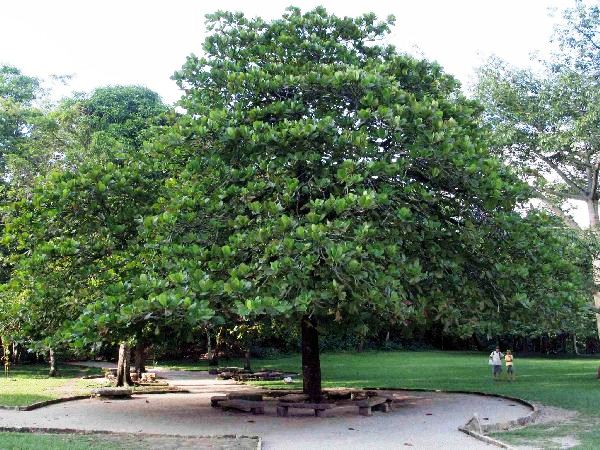
Take care of young almond trees so that they grow healthily
Properly caring for young almond trees is the key to having a healthy, green and long-lived almond tree. This process requires patience and understanding of the unique needs of plants at different stages of development. From my 20 years of experience, I would like to share tips to help you take care of young almond trees most effectively.
Watering: This is the factor that determines the survival of young almond trees, especially in the first months after planting. Young plants need to be watered regularly to avoid dry soil. Watering frequency depends on weather conditions, soil type and plant size. Normally, you should water every day in the early morning or late afternoon, making sure the soil is always moist but not waterlogged. For newly planted young almond trees, water thoroughly so that the soil is evenly saturated with water. If using a drip irrigation system, adjust the amount of water accordingly to avoid over-watering and causing waterlogging of the roots. Observe the soil carefully. When you see the soil surface is dry, water immediately.
Fertilization: Providing enough nutrients is an important factor for young almond trees to grow quickly and healthily. You should choose the type of fertilizer suitable for each stage of plant development. In the early stages, prioritize using organic fertilizers, such as manure or compost, to help the plant develop a healthy root system. After the tree takes root and begins to grow strongly, you can add chemical fertilizers such as NPK, but you need to pay attention to the dosage and usage to avoid harming the tree. Consult with an expert or seller to choose the right fertilizer and dosage that best suits your young almond tree. Normally, fertilize the tree once every 2 months, evenly around the base of the tree.
Pruning: Proper pruning helps young almond trees grow in a balanced, beautiful shape and avoid pests. Remove dry, diseased or overgrown branches. Pruning should be done in spring or fall, when the tree is in its active growth phase. Use sharp, clean tools to avoid damaging the plant. Absolutely do not prune too much, only cut off the necessary parts.
Pest prevention: Young almond trees are easily attacked by pests, especially in wet weather conditions. Regularly check your plants to detect early signs of pests. Use biological or chemical pesticides when necessary, but follow instructions for use to avoid harm to plants and the environment. Prevention is always better than cure, so make sure the plant is always well cared for, the soil is well-drained and the plant is planted in a place with full sunlight. Some common diseases on young almond trees include root rot, leaf spot disease, and downy mildew.
Protect trees from environmental impacts: Young almond trees need to be protected from adverse environmental impacts such as storms, frost, and intense heat. If necessary, use measures such as making a shade cover for the tree on hot days or fixing the tree to support poles to prevent it from breaking in strong winds.
Observe and adjust: The process of caring for young almond trees is a continuous process. Observe the plant’s growth every day to detect unusual problems and promptly adjust care methods accordingly. This will help you get a healthy and well-developed young almond tree.
Compare young almond trees and mature almond trees
The difference between young almond trees and mature almond trees is obvious, not only in size but also in many other characteristics. Understanding these differences will help you care for young almond trees more effectively and predict its future development.
Size and shape: Young almond trees are small in size, have soft trunks, and are only a few tens of centimeters to a few meters in height. Young tree trunks are usually slender, the bark is soft, light brown or gray-green. Young almond tree leaves are often purple or light green, depending on the variety and environmental conditions. In contrast, mature almond trees are very tall, up to 20-30 meters tall, with large, strong trunks, thick and rough bark, dark brown in color. Mature almond tree leaves are dark green and much larger in size than young almond tree leaves.
Root system: Young almond trees have a root system that is not completely developed, the roots are young, thin and relatively shallow. Mature almond trees have a strongly developed root system that spreads and penetrates deep into the ground, helping the tree stand firmly and absorb nutrients more effectively.
Tolerance: Young almond trees are very sensitive to harsh environmental conditions such as drought, flooding, and pests. Plants need careful care to ensure survival and growth. Mature almond trees have better tolerance and are less affected by harsh environmental conditions.
Growth rate: Young almond trees have a faster growth rate than mature almond trees. However, growth rate depends on many factors such as soil conditions, climate and care. Mature almond trees will have a slower growth rate.
Ability to flower and fruit: Young almond trees usually do not have the ability to flower or fruit yet. Mature almond trees usually flower and bear fruit every year, producing dark brown almonds that are quite large in size.
Common diseases in young almond trees and how to prevent and treat them
Young almond trees, due to their immature immune systems, are easily attacked by many types of pests. Early recognition of disease symptoms and timely application of preventive measures are extremely important to protect tree health.
Root rot: This is a common disease that causes death of young almond trees. Symptoms: Yellow leaves, wilting, rotten roots. Prevention: Make sure the soil drains well and do not let the plant become waterlogged. Use antifungal medicine and water the base of the tree according to instructions.
Leaf spot disease: Symptoms: Brown and black spots appear on the leaves, causing the leaves to dry and fall. Prevention: Water properly, avoid wetting the leaves. Use specialized fungicide, spray evenly on leaves.
Leaf-eating caterpillars: Symptoms: Leaves are punctured, branches are broken, plants grow slowly. Prevention: Regularly check trees, detect and catch worms manually. Use biological or chemical pesticides when necessary. Always follow the instructions for use to avoid harm to human health and the environment.
Nematode disease: Nematodes are organisms that damage plant roots. Symptoms: Stunted plants, yellow leaves, swollen roots. Prevention: Use specialized nematicides or farming and crop rotation measures to reduce nematode density in the soil. Choose planting soil that is clean and not infected with nematodes.
Bacterial diseases: Some types of bacteria can harm young almond trees, causing the leaves to turn yellow, wither, or cause lesions to appear on the trunk and branches. Prevention: Keep plants healthy, use specialized antibiotics when necessary. Keep the garden clean, remove diseased plants and fallen leaves to avoid the spread of bacteria.
Note: When using pesticides or pesticides, please follow the instructions for use and wear a mask and gloves to protect your health. Prioritize the use of biological drugs that are safe for the environment and humans. If you are unsure about how to prevent pests, consult agricultural experts or technical staff.


 0934.19.6789
0934.19.6789
